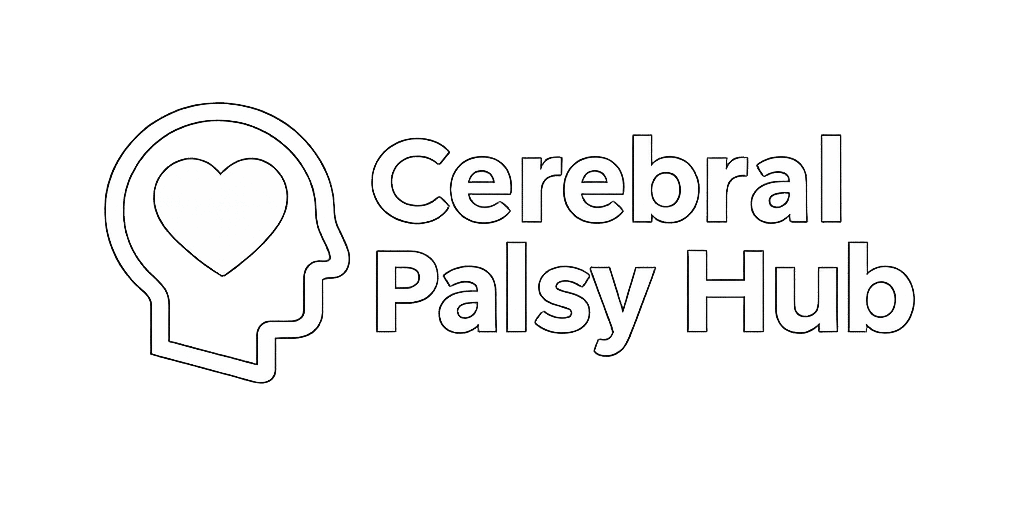Physical Therapy for Cerebral Palsy
Physical therapy helps prevent long-term complications from CP, such as muscle contractures or joint deformities by improving movement, strength, balance, and posture. It's one of the most important treatments for people living with cerebral palsy.
How Does Physical Therapy Help?
Children with cerebral palsy often have stiff muscles, weak posture, and difficulty with coordination. Without intervention, these issues can get worse over time, making everyday activities harder.
Physical therapy helps manage these symptoms and prevents secondary complications. By working with a physical therapist, children can improve their mobility, relieve pain, and reduce muscle stiffness.
What Are the Benefits of Physical Therapy?
Physical therapy provides a wide range of benefits that support both immediate function and long-term health. Physical therapy can help with:
-
Movement and mobility
-
Building strength and flexibility
-
Managing stiffness and muscle tightness
-
Reducing pain or discomfort
-
Encouraging independence in daily routines
- Posture and gait
- General health
What Happens During a Physical Therapy Session?
A therapy session will start with an evaluation of the child's medical history and an examination of their posture, strength, and range of motion. A licensed physical therapist will make a treatment plan with goals tailored to the child’s abilities.
Sessions may involve a variety of exercises such as stretching, strengthening, or balance activities, often designed to feel like play for younger children. Therapists will also guide parents on exercises to practice at home for in between sessions.
See how we can help you cover the costs of your child's cerebral palsy treatment.
Case reviews are 100% free.
Types of Exercises and Equipment Used
The type of exercises depends on if the child has high or low muscle tone, balance problems, or difficulty walking. Some common approaches include:
-
Stretching routines and range of motion exercises to reduce muscle stiffness
-
Strengthening exercises to build endurance and cardiovascular health
-
Balance training for coordination and posture
-
Gait training to improve walking
- Breathing exercises to calm nerves
Therapists may also use equipment such as orthotic braces, resistance bands, exercise balls, walkers, or aquatic therapy pools.
Physical Therapy by Age
Physical therapy needs will change as children grow. Starting physical therapy treatments during a child's toddler and early school years is most crucial to avoid preventable muscle stiffness, pain, and mobility issues.
Toddlers may focus on rolling, crawling, learning to walk, or practicing movements that will help with physical development.
School-aged children work on coordination, strength, and adapting to growth changes. During this stage of life, children may show signs of new mobility issues due to their body's growth. Consistent physical therapy during school years is vital to ensure that your child will grow and develop properly.
Teens may need more advanced exercises to support independence, sports, or daily school activities.
Adults will likely focus on managing pain, preserving mobility, and preventing decline.
Each stage of life will require different approaches to physical therapy. A licensed therapist can create a custom routine for each patient's needs.
Physical Therapy by Types of Cerebral Palsy
Spastic: Physical therapy helps manage stiff muscles and improve flexibility. The focus will be on stretching, mobility training, and posture correction to reduce contractures.
Dyskinetic: Therapy will place emphasis on controlled, precision-based movements, balance, and functional skills. Children with dyskinetic CP will learn to manage involuntary motions and improve coordination for daily tasks.
Ataxic: Sessions will focus on strengthening balance, coordination, and fine motor skills. Other exercises that improve stability and hand-eye coordination may also be incorporated.
How Do I Know if My Child Needs Physical Therapy?
Signs that a child may need physical therapy appear in early development.
These may include:
- Difficulty walking or issues with balance
- Frequent falls and tripping
- Stiffness in the arms or legs
- Delayed motor milestones
Parents may also notice unusual walking patterns such as toe-walking or scissoring. A pediatrician or specialist can refer your child for an evaluation if there are concerns.
Other Benefits of Physical Therapy
In addition to improving movement, therapy can help manage related musculoskeletal issues that may arise with cerebral palsy, such as:
-
Scoliosis and spinal curvatures, lumbar lordosis, and other spinal alignment issues
-
Joint deformities in knees, elbows, or even in the hands and wrists, causing fine motor skill challenges
-
Pelvic alignment problems such as anterior or posterior pelvic tilts, which can cause lower back pain
-
Shortened tendons or contractures, such as in the Achilles, which can make walking and standing difficult
-
Abnormal posture or gait issues from reliance on one side of the body or repeated movements over time
What Are the Risks of Not Getting Physical Therapy?
When children with cerebral palsy do not receive physical therapy, muscle stiffness can worsen, making it increasingly harder to move over time.
Children may also be at risk of developing contractures, where muscles shorten permanently. Contractures can limit joint function and cause issues with daily mobility. Balance problems and the risk of falls may also increase due to atrophy from not developing stabilizing muscles in the legs and torso.
In the long term, not getting physical therapy can lead to preventable pain, loss of mobility, and reduced independence. The sooner children with CP start physical therapy, the better.
What Are the Costs of Physical Therapy?
The cost of therapy can vary depending on location, frequency, and whether specialized equipment is needed. Insurance will often cover some or even all of the expenses, but families may still face copays or limits on the number of sessions.
There are many public programs, school services, and nonprofit organizations that can provide extra financial support.
How to Find the Right Physical Therapist
Start by choosing a licensed therapist with experience in pediatric cerebral palsy. A skilled therapist understands the unique movement challenges children at different stages of development face and can adjust sessions to match their needs.
As a parent or caregiver, be sure to ask about the therapist’s credentials, training, and approach to working with children with disabilities. Building a good relationship between the therapist, child, and family is key to getting the best outcomes from therapy.
The average lifetime cost to care for a child with cerebral palsy is over $1.6 million. Find out if your child is eligible for legal compensation. Get a free case review now.
100% free and confidential.
I understand by submitting this form that I am providing my consent to be contacted by Cerebral Palsy Hub and its legal partners, potentially using automated technology, at the number provided regarding my potential claim/their services. Consent is not required to use their services. Msg frequency varies, and message and data rates may apply. Reply HELP for help or STOP to unsubscribe. SMS Terms of Service. I understand and agree that by submitting this form I agree to the Privacy Policy and Terms of Use and that this form does not create an attorney-client relationship and is not confidential or privileged and may be shared.
Physical Therapy for Cerebral Palsy FAQs
 Written and Medically Reviewed by:
Written and Medically Reviewed by:
Cerebral Palsy Hub Team
Cerebral Palsy Hub was founded to help support children and their families with cerebral palsy and to create a safe space for those affected. We strive to provide the most accurate, up-to-date information, and tools to help give your child the life they deserve.
Last Updated: September 21, 2025
Need Legal Help?
Our team of legal experts can help answer your questions.
Our team of legal experts can help answer your questions.
